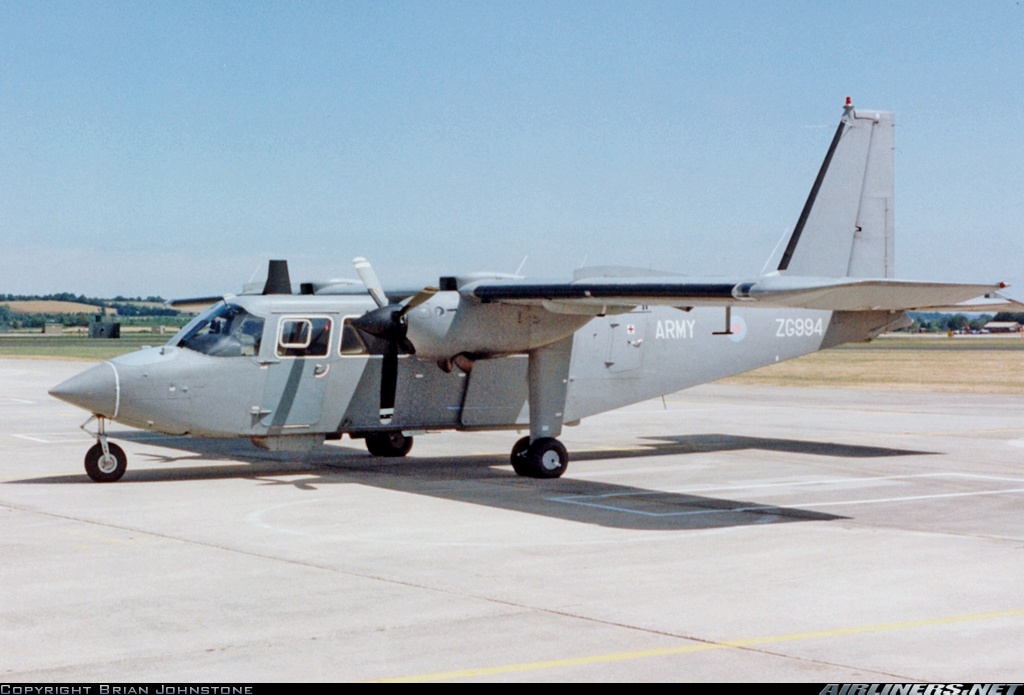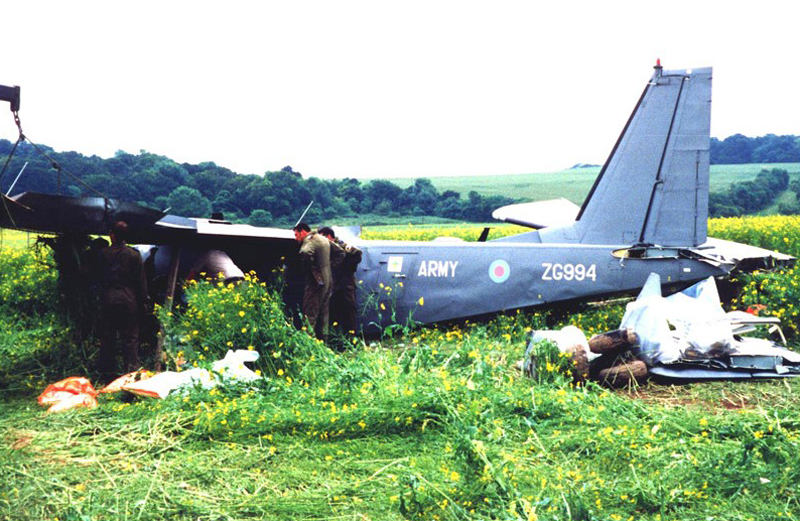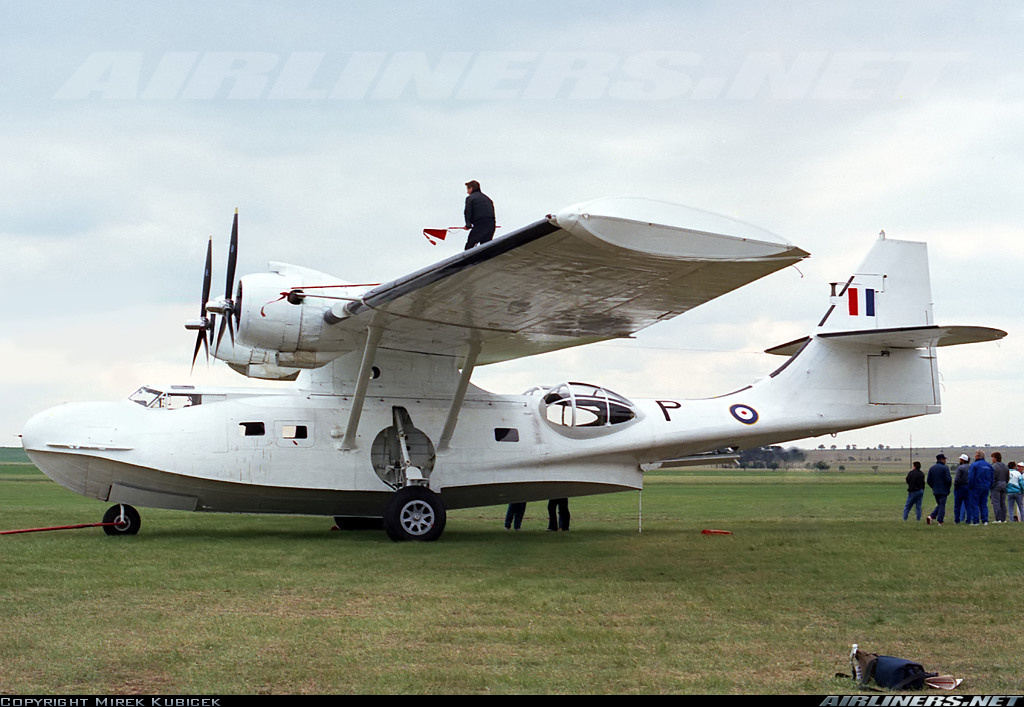Country
code
Hampshire
Crash of a Beechcraft B200 Super King Air in Blackbushe: 5 killed
Date & Time:
Dec 23, 2000 at 1351 LT
Registration:
VP-BBK
Survivors:
No
Schedule:
Blackbush - Palma de Mallorca
MSN:
BB-1519
YOM:
1995
Crew on board:
1
Crew fatalities:
Pax on board:
4
Pax fatalities:
Other fatalities:
Total fatalities:
5
Captain / Total hours on type:
1243.00
Circumstances:
The aircraft, with the pilot and four passengers on board, departed Blackbushe from Runway 08 in fog with a visibility of less than 500 metres. As the aircraft reached the upwind end of the runway it was seen to bank to the left before disappearing from view. It crashed 13 seconds later into a factory complex where a major fire ensued. All on board were fatally injured. A substantial amount of the aircraft structure was consumed by fire. Engineering examination of that which remained showed that there was no malfunction found within the engines, propellers or controls that would have affected the flight. Analysis of the cockpit voice recorder however showed a reduction in one of the propellers rpm as the aircraft rotated that would have led to thrust asymmetry. Through a combination of lack of visual reference, confusion as to the cause of the power reduction and possible disorientation the pilot lost control of the aircraft and although he may have realised the situation seconds before impact with the ground there was insufficient height available to effect a safe recovery.
Probable cause:
Whilst the CVR does not provide any comments by the pilot as to the problems he was experiencing, spectral analysis of the CVR recording indicates that a significant difference in propeller rpm occurred at rotation when the pilot would normally have removed his right hand from the power levers. There was no evidence of a malfunction in either engine or the propeller control systems thus it is probable that migration of a power lever(s) occurred due to insufficient friction being set on the power lever friction control. The fiction control had been slackened during recent maintenance and it was possible that it was not adjusted sufficiently by the pilot during his checks prior to takeoff. His simulator training had included engine failures but as far as could be established, the pilot had not encountered or been trained for the situation of power lever(s) migration during takeoff. With his level of experience the pilot should have controlled the resultant asymmetric thrust and in reasonable conditions continued the takeoff to a safe height where analysis of the problem could have been carried out. In the event the takeoff was carried out in extremely low visibility conditions leading to the pilot's total loss of any ground references within seconds of lift off. Having controlled the aircraft initially the lack of visual reference with the ground, possible confusion with attitude instrument bank angle display, physical disorientation brought about by cockpit activity and confusion as to the exact nature of the problem led the pilot to lose control of the aircraft at a low altitude. The unusual attitude developed by the aircraft and the reason for the power asymmetry may have been recognised by the pilot several seconds before impact however there was insufficient height available for him to effect a safe recovery. The transition from visual to instrument flight in the low visibility conditions existing at the time of departure was considered to be a major contributory factor in this accident.
Final Report:

Crash of a Britten-Norman BN-2T Islander AL1 at RAF Middle Wallop
Date & Time:
Jun 30, 1999
Registration:
ZG994
Survivors:
Yes
Schedule:
Middle Wallop - Middle Wallop
MSN:
2206
YOM:
1989
Crew on board:
2
Crew fatalities:
Pax on board:
0
Pax fatalities:
Other fatalities:
Total fatalities:
0
Circumstances:
The crew was completing a local training flight at RAF Middle Wallop. After landing, the twin engine failed to stopped, overran and came to rest. Both pilots escaped uninjured and the aircraft was damaged beyond repair.


Crash of a Consolidated PBY-5A Catalina off Southampton: 2 killed
Date & Time:
Jul 27, 1998 at 1444 LT
Registration:
VP-BPS
Survivors:
Yes
Schedule:
Southampton - Southampton
MSN:
1997
YOM:
1944
Crew on board:
4
Crew fatalities:
Pax on board:
14
Pax fatalities:
Other fatalities:
Total fatalities:
2
Captain / Total hours on type:
151.00
Circumstances:
The aircraft had been booked for a static display and press 'photocall' at Southampton Airport, as part of the official launch of a project known as Seawings 2000. The aircraft operator had offered some short flights, free of charge, for the event organisers to use as they felt appropriate. Initial seat allocation was to the press, and members and officers of Southampton City Council. The remaining seats were offered to individuals representing organisations assisting the running of the project. The crew consisted of two pilots and two rear crew; one of the latter was designated 'crew chief'. There were two passenger compartments separated by a central compartment which had a door in the front bulkhead. Each passenger compartment was configured with eight seats, four either side of a central aisle. The front seats in each compartment were aft facing. The seats were typical airline type and had a standard lap belt restraint; a lifejacket was stowed under each seat. There was a bench type seat in each rear blister; however, these did not have restraint belts. On land, the aircraft is normally entered/vacated via ventral stairs, however, this access is not available when on water. There is a window type hatch between the seats on the left side of the front compartment. This is hinged at the top and opens upwards and outwards. To the rear and either side of the aft compartment there are two observation blisters which open upward in an 'eyelid' fashion. All three exits can be used for emergency egress. Emergency egress from the flight deck is through a removable hatch above the co-pilot's head.
Probable cause:
Because the nose gear doors were not recovered, it is not possible to exclude the possibility that the aircraft encountered a significant piece of flotsam which caused the doors to collapse inwards. Regardless of this, the presence of the severe corrosion in the nose gear operating mechanism torque tube can only have served to compromise the ability of the left door to resist the range of loads which might have been imposed during a water landing. The corrosion found in the torque tube had clearly developed over a long time but it went undetected because it was inside a closed area and no specific inspection of the inside of the tubes was called for. When looking at another Catalina, it was observed that there were no bungs in the aft ends of the torque tubes and it would have been possible, with suitable apparatus, to inspect the whole of the inside of the tube assemblies, particularly in the zone where the tube failed on this occasion. The Maintenance Manual and Schedule for the Catalina were developed and written in a different age when these aircraft were very differently utilised. Although both the Manual and Schedule have been developed as a result of the Catalina's continued amphibious operation, for probably much longer than originally envisaged, there are now likely to be some time related maintenance considerations which did not previously exist.
Final Report:



